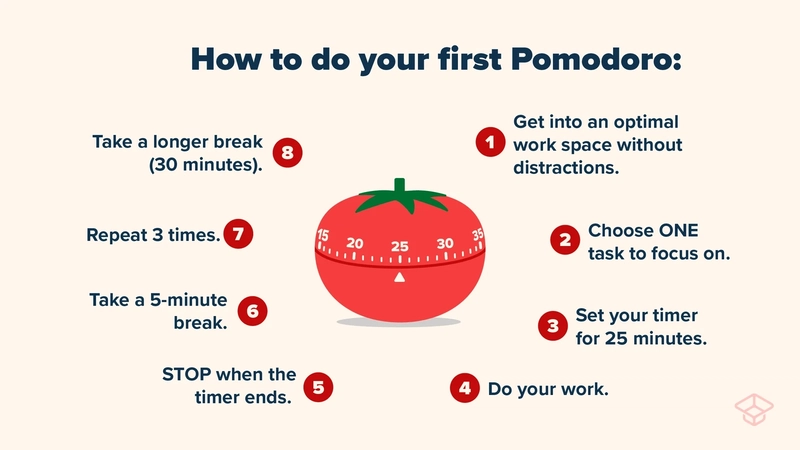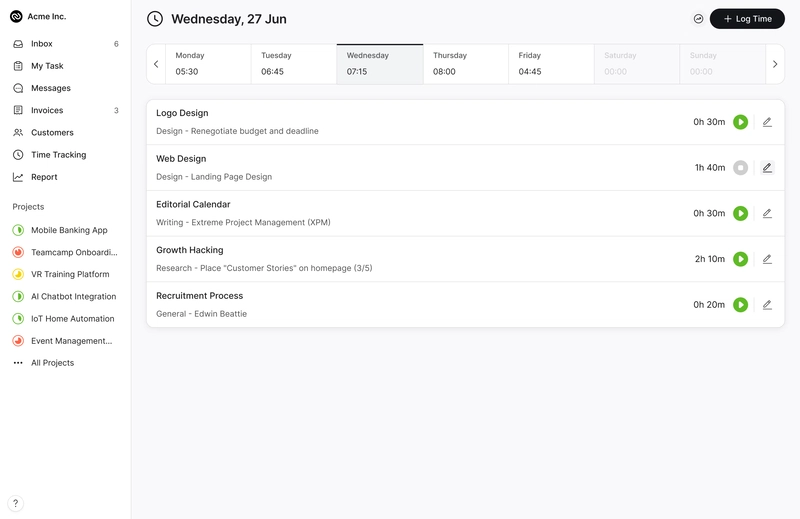Implementing the Pomodoro Technique in Software Development: Case Studies and Best Practices
Introduction In today's fast-paced development environment, developers face mounting pressure to deliver high-quality code faster than ever. Yet studies show that developers spend only 32% of their time writing code, with the remainder consumed by debugging, meetings, and administrative tasks. This productivity challenge makes time management techniques like the Pomodoro method increasingly valuable for development teams seeking to maximize their effectiveness. What is the Pomodoro Technique? The Pomodoro Technique is a time management method developed by Francesco Cirillo in the late 1980s that breaks work into focused intervals (traditionally 25 minutes), separated by short breaks. This simple yet powerful approach helps maintain mental freshness and sustained focus—essential qualities for complex problem-solving in software development. The core components of the technique include: Working in focused intervals (pomodoros) Taking short breaks between intervals Taking longer breaks after completing several Pomodoro Tracking completed pomodoros to measure productivity What makes the Pomodoro Technique particularly effective for developers is how it transforms time from "something that has been lost" into "a concrete measure of productivity". This shift in perspective helps combat the planning fallacy—our tendency to underestimate how long tasks will take—which is particularly common in software development projects. Why Traditional Pomodoro Doesn't Always Work for Developers While the conventional 25-minute work/5-minute break cycle works well for many professionals, developers often find this standard interval challenging. One developer noted on Reddit: "For me, conventional Pomodoro of 25 min work and 5 min break is not working. As a developer, for my mind to enter into a logical state and work well, it would take me some time to get into the flow." This experience is common among developers working with complex codebases, where getting oriented can take significant time before productive work begins. Many developers report success with modified intervals: 45-minute or 55-minute work sessions that allow sufficient time to enter a flow state 5-10 minute breaks between sessions Longer breaks (15-20 minutes) after completing 2-4 extended Pomodoro Case Studies: Pomodoro in Action Case Study 1: EVO Creative Studio EVO, a creative development studio, implemented a modified Pomodoro Technique alongside Teamcamp's project management platform to address workflow challenges. Their development team struggled with frequent context switching and difficulty tracking actual time spent on tasks. After adopting longer Pomodoro intervals (50 minutes) and integrating them with Teamcamp's time-tracking features, EVO achieved: 30% improvement in task completion rates Enhanced client satisfaction through better project visibility Significant reduction in administrative overhead The key to their success was combining focused work sessions with Teamcamp's centralized workspace, which allowed them to track pomodoros completed per task and better estimate future project timelines. Case Study 2: Web Development Agency A web development agency implemented the Pomodoro Technique to boost productivity across their distributed team. They found that the standard 25-minute intervals worked well for frontend tasks but were insufficient for complex backend development. Their solution was to customize intervals based on task type: 25-minute pomodoros for meetings, emails, and simple tasks 50-minute pomodoros for complex coding tasks Team-wide "focus hours" where everyone worked in synchronized Pomodoro Tracking these sessions in Teamcamp reduced unnecessary meetings by 40% and improved task clarity, leading to better collaboration without disrupting workflows. Best Practices for Implementing Pomodoro in Development Teams 1. Customize Your Intervals Development work often requires longer periods of uninterrupted focus. Experiment with different interval lengths to find what works best for your team and specific tasks: 55-minute work/5-minute break cycles for complex coding tasks 25-minute intervals for administrative work, emails, or more straightforward tasks Two 55-minute sessions followed by a more extended 10-minute break 2. Integrate with Project Management Tools Combining the Pomodoro Technique with robust project management tools amplifies its effectiveness. Teamcamp provides an ideal platform for this integration by: Centralizing tasks, documents, and discussions in one workspace Enabling voluntary time tracking aligned with Pomodoro sessions Providing real-time reporting on task completion and productivity metrics Supporting agile workflows with Kanban boards that visualize progress Organizations using Teamcamp report a 40% reduction in unnecessary meetings and improved task clarity—ke
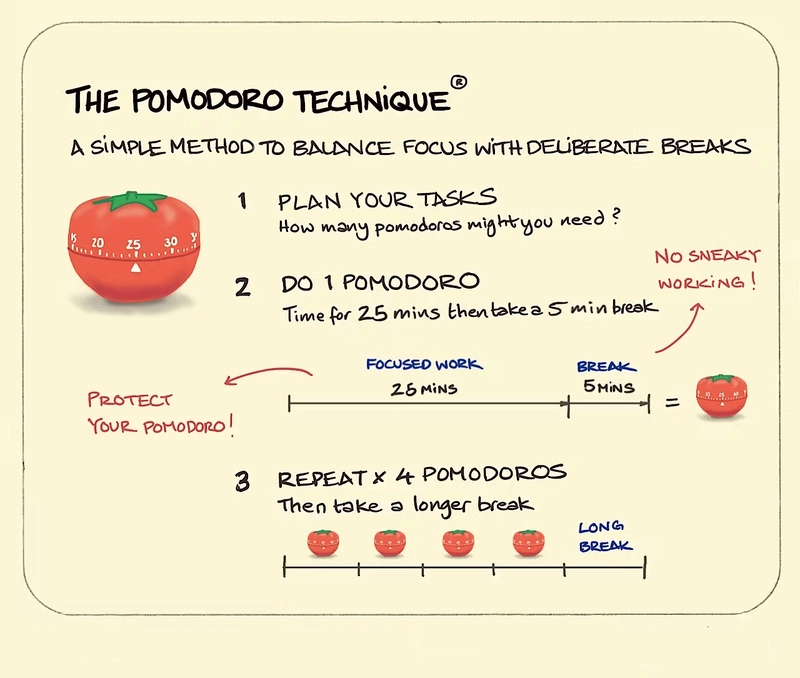
Introduction
In today's fast-paced development environment, developers face mounting pressure to deliver high-quality code faster than ever. Yet studies show that developers spend only 32% of their time writing code, with the remainder consumed by debugging, meetings, and administrative tasks.
This productivity challenge makes time management techniques like the Pomodoro method increasingly valuable for development teams seeking to maximize their effectiveness.
What is the Pomodoro Technique?

The Pomodoro Technique is a time management method developed by Francesco Cirillo in the late 1980s that breaks work into focused intervals (traditionally 25 minutes), separated by short breaks.
This simple yet powerful approach helps maintain mental freshness and sustained focus—essential qualities for complex problem-solving in software development.
The core components of the technique include:
- Working in focused intervals (pomodoros)
- Taking short breaks between intervals
- Taking longer breaks after completing several Pomodoro
- Tracking completed pomodoros to measure productivity
What makes the Pomodoro Technique particularly effective for developers is how it transforms time from "something that has been lost" into "a concrete measure of productivity".
This shift in perspective helps combat the planning fallacy—our tendency to underestimate how long tasks will take—which is particularly common in software development projects.
Why Traditional Pomodoro Doesn't Always Work for Developers
While the conventional 25-minute work/5-minute break cycle works well for many professionals, developers often find this standard interval challenging.
One developer noted on Reddit: "For me, conventional Pomodoro of 25 min work and 5 min break is not working. As a developer, for my mind to enter into a logical state and work well, it would take me some time to get into the flow."
This experience is common among developers working with complex codebases, where getting oriented can take significant time before productive work begins. Many developers report success with modified intervals:
- 45-minute or 55-minute work sessions that allow sufficient time to enter a flow state
- 5-10 minute breaks between sessions
- Longer breaks (15-20 minutes) after completing 2-4 extended Pomodoro
Case Studies: Pomodoro in Action
Case Study 1: EVO Creative Studio
EVO, a creative development studio, implemented a modified Pomodoro Technique alongside Teamcamp's project management platform to address workflow challenges. Their development team struggled with frequent context switching and difficulty tracking actual time spent on tasks.
After adopting longer Pomodoro intervals (50 minutes) and integrating them with Teamcamp's time-tracking features, EVO achieved:
- 30% improvement in task completion rates
- Enhanced client satisfaction through better project visibility
- Significant reduction in administrative overhead
The key to their success was combining focused work sessions with Teamcamp's centralized workspace, which allowed them to track pomodoros completed per task and better estimate future project timelines.
Case Study 2: Web Development Agency
A web development agency implemented the Pomodoro Technique to boost productivity across their distributed team. They found that the standard 25-minute intervals worked well for frontend tasks but were insufficient for complex backend development.
Their solution was to customize intervals based on task type:
- 25-minute pomodoros for meetings, emails, and simple tasks
- 50-minute pomodoros for complex coding tasks
- Team-wide "focus hours" where everyone worked in synchronized Pomodoro
Tracking these sessions in Teamcamp reduced unnecessary meetings by 40% and improved task clarity, leading to better collaboration without disrupting workflows.
Best Practices for Implementing Pomodoro in Development Teams
1. Customize Your Intervals
Development work often requires longer periods of uninterrupted focus. Experiment with different interval lengths to find what works best for your team and specific tasks:
- 55-minute work/5-minute break cycles for complex coding tasks
- 25-minute intervals for administrative work, emails, or more straightforward tasks
- Two 55-minute sessions followed by a more extended 10-minute break
2. Integrate with Project Management Tools
Combining the Pomodoro Technique with robust project management tools amplifies its effectiveness. Teamcamp provides an ideal platform for this integration by:
- Centralizing tasks, documents, and discussions in one workspace
- Enabling voluntary time tracking aligned with Pomodoro sessions
- Providing real-time reporting on task completion and productivity metrics
- Supporting agile workflows with Kanban boards that visualize progress
Organizations using Teamcamp report a 40% reduction in unnecessary meetings and improved task clarity—key benefits complementing the Pomodoro approach.
3. Apply the Three Pomodoro Rules
For maximum productivity, follow these three core rules of the technique:
- Break down complex projects: If a task requires more than four pomodoros, divide it into smaller, actionable steps. This ensures clear progress on projects.
- Combine small tasks: Group tasks that take less than one Pomodoro together (e.g., "write documentation comments," "set up a test environment," "review pull request").
- Respect the pomodoro: Once started, a pomodoro must be completed. Note any interruptions or ideas to return to later, using Teamcamp's task management features to capture these without breaking focus.
4. Track and Analyze Your Pomodoros
The Pomodoro Technique becomes even more powerful when you track your sessions and analyze patterns:
- Use Teamcamp time-tracking features to log pomodoros completed per task
- Review which times of day yield the most productive Pomodoro sessions
- Identify which tasks consistently take more pomodoros than estimated
- Use this data to improve future project estimations
5. Combine with Other Productivity Methods
The Pomodoro Technique works well alongside other development methodologies:
- Pair it with Agile or Scrum frameworks, using Pomodoros during sprint work
- Combine with Getting Things Done (GTD) for task organization
- Use time blocking to allocate specific Pomodoro sessions for different types of work
Tools to Enhance Your Pomodoro Practice
While the basic Pomodoro Technique requires nothing more than a timer, these tools can enhance the experience for development teams:
- Teamcamp:
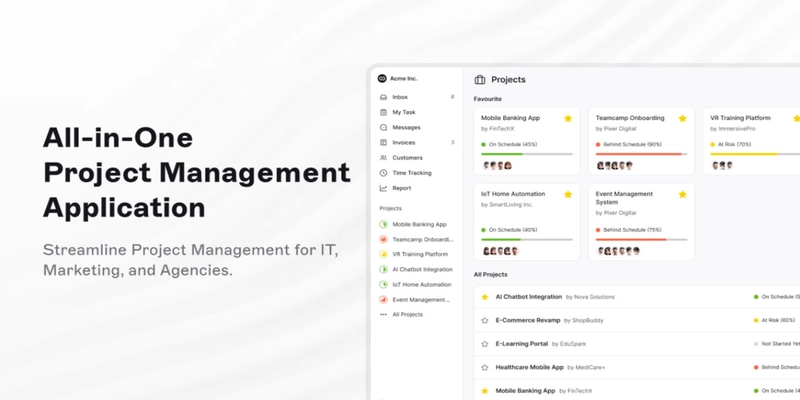
An all-in-one project management platform that integrates task management, time tracking, and team collaboration—perfect for organizing and monitoring Pomodoro sessions across teams.
Try Teamcamp Time tracking feature
- Integrated Development Environments (IDEs): Modern IDEs like JetBrains IntelliJ IDEA and Microsoft Visual Studio offer features that complement the Pomodoro Technique, such as code analysis and intelligent completion that maximize productivity during focused intervals.
- Distraction blockers: Tools like Freedom, StayFocusd, and Cold Turkey help maintain focus during Pomodoro sessions by blocking distracting websites and applications.
Implementing Pomodoro in Your Development Workflow
Ready to boost your development team's productivity with the Pomodoro Technique? Here's a simple implementation plan:
- Start small: Begin with individual adoption before rolling out team-wide
- Customize intervals: Experiment with different Pomodoro lengths based on task types
- Set up Teamcamp: Create a workspace that organizes tasks into Pomodoro-sized chunks
- Track results: Use Teamcamp's reporting features to measure the impact on productivity
- Refine and adjust: Regularly review and optimize your approach based on team feedback
Conclusion
The Pomodoro Technique offers a powerful framework for enhancing developer productivity, especially when customized to fit the unique demands of software development work. By breaking complex tasks into focused intervals, developers can maintain higher concentration levels, reduce burnout, and ultimately deliver better code in less time.
Combined with Teamcamp's comprehensive project management capabilities, the Pomodoro Technique becomes even more effective, providing teams with the structure, visibility, and collaboration tools needed to thrive in today's demanding development environment.
Ready to transform your development team's productivity? Explore how Teamcamp can help you implement the Pomodoro Technique and other productivity-enhancing workflows. With features designed specifically for development teams, Teamcamp brings everything you need into one place—seamlessly managing projects, facilitating team collaboration, and keeping clients in the loop.












































































































































































![[The AI Show Episode 144]: ChatGPT’s New Memory, Shopify CEO’s Leaked “AI First” Memo, Google Cloud Next Releases, o3 and o4-mini Coming Soon & Llama 4’s Rocky Launch](https://www.marketingaiinstitute.com/hubfs/ep%20144%20cover.png)










































































































































































































![GrandChase tier list of the best characters available [April 2025]](https://media.pocketgamer.com/artwork/na-33057-1637756796/grandchase-ios-android-3rd-anniversary.jpg?#)










































.png?width=1920&height=1920&fit=bounds&quality=70&format=jpg&auto=webp#)
























.webp?#)






















































































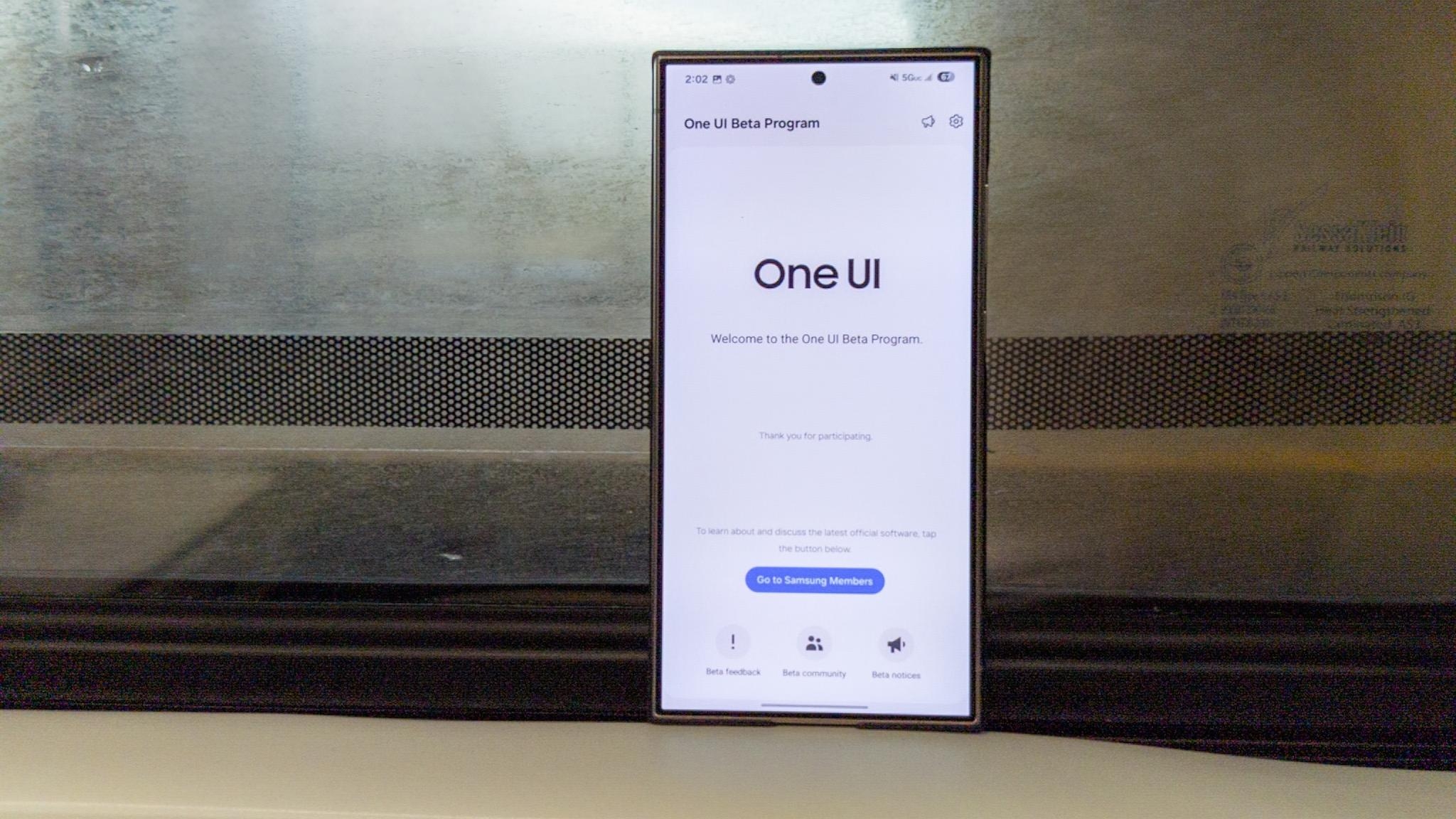

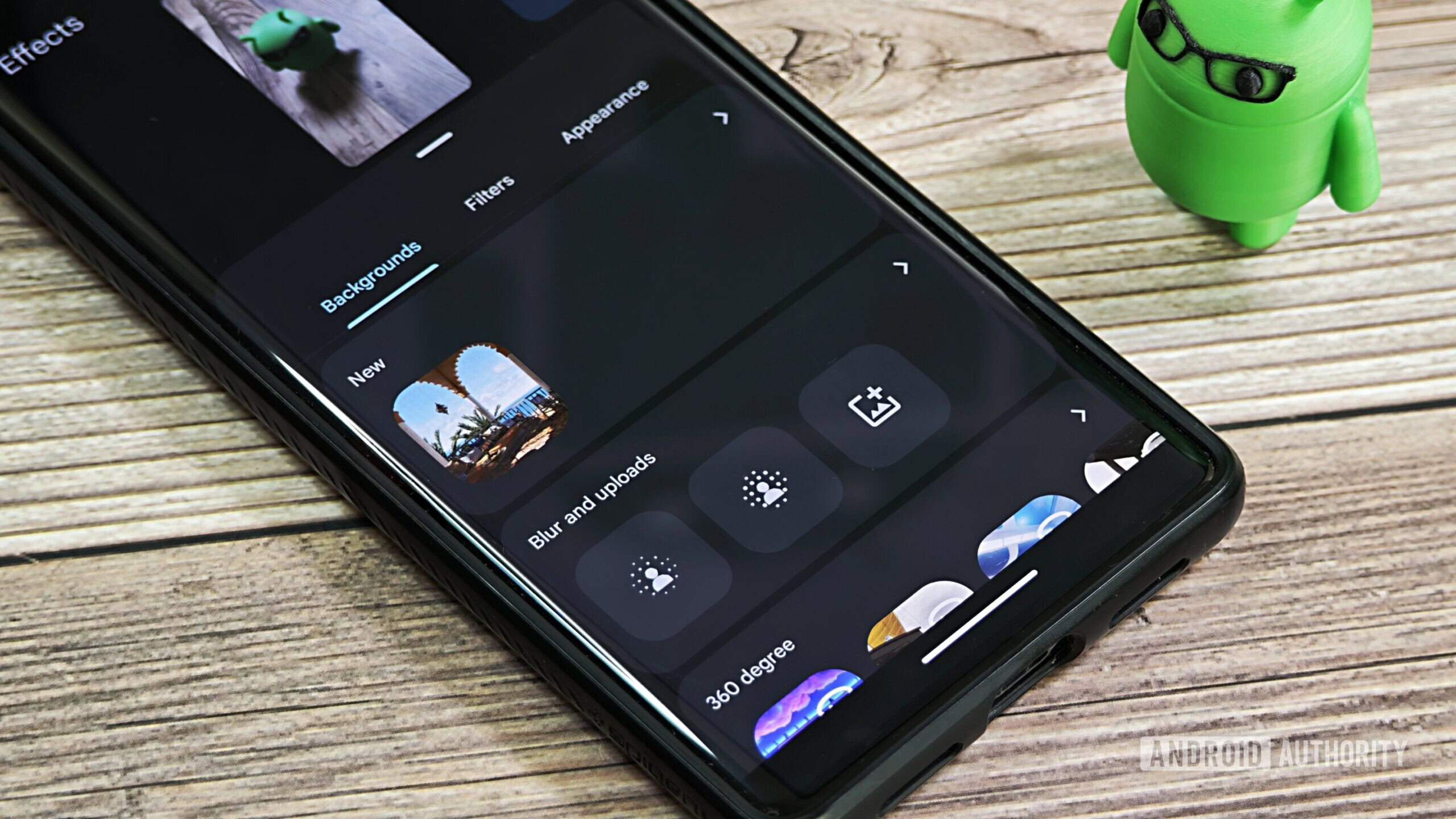















![New Beats USB-C Charging Cables Now Available on Amazon [Video]](https://www.iclarified.com/images/news/97060/97060/97060-640.jpg)

![Apple M4 13-inch iPad Pro On Sale for $200 Off [Deal]](https://www.iclarified.com/images/news/97056/97056/97056-640.jpg)





































































































































